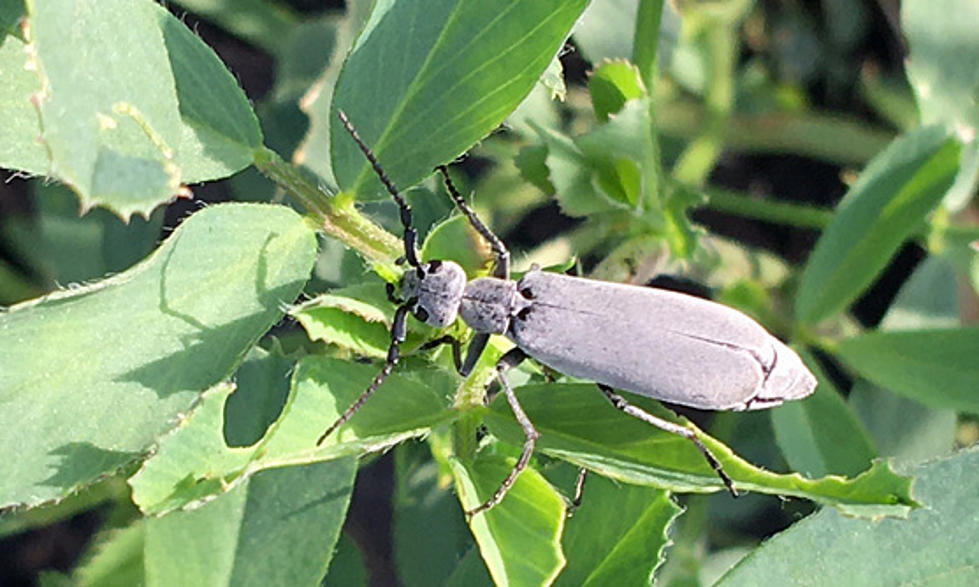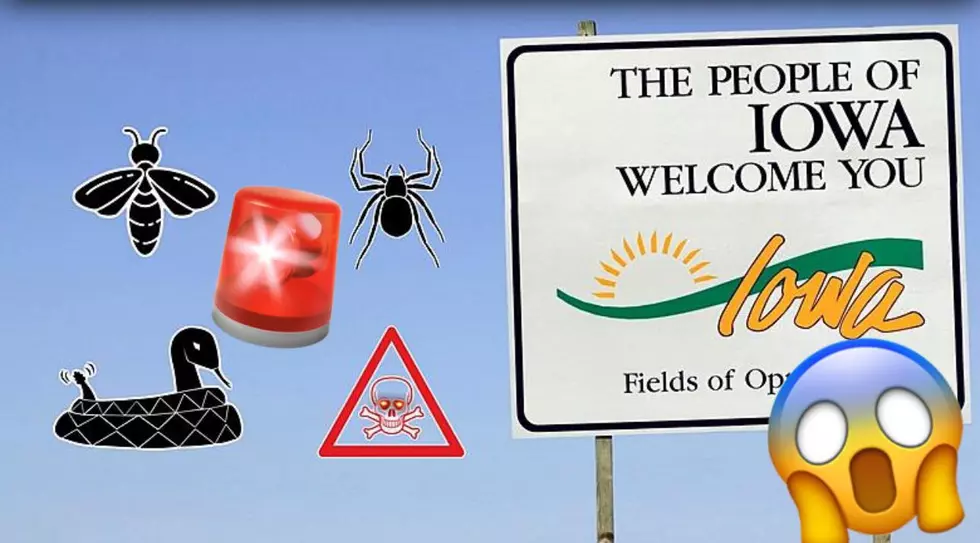
WARNING: This Midwest Insect Can Kill Livestock, Injure People
Both you and your livestock should steer clear of this nasty insect. It's dangerous, even if it doesn't bite you.

It can reach 1 1/2 inches in size and has a perfect name. The Ash-Gray Blister Beetle is aptly named for not just its color, but the harm it can cause. As you can see from the photo above, it appears to have a neck between its head and its body. It's not the only blister beetle to watch out for.
The Ash-Gray Blister Beetle is found in the Midwest in a common place... alfalfa fields. They winter in the soil as larva and eventually feed on grasshopper eggs. However, when they become adults, they go from good to bad.
Ash-Gray Blister Beetles feast on blooming alfalfa fields and weeds like dandelions and goldenrod. What makes them toxic to people and animals is a poison called cantharidin. When a blister beetle dies, the level of cantharidin in its body does not decrease. Cantharidin can even withstand heat and drying, so hay with blister beetles remains toxic.
According to Insect Crop Management, an adult horse could be killed by consuming as few as 25 blister beetles. Horses that eat fewer than that can still have blisters in their mouth, suffer from diarrhea, increased heart rate, dehydration, and more. Sheep and cattle can also be poisoned by the cantharidin oil of ash-gray blister beetles.
So what about people? Thankfully, cantharidin isn't toxic to humans, but that doesn't mean it can't hurt us. If you crush a blister beetle on your skin, or one simply crawls on you, you can develop a blister from the cantharidin. According to Healthline, it can take up to 48 hours for the blister to develop. It should disappear within a week.
While they may keep the grasshopper population down, it's clear that the blister beetle isn't our friend. In addition to the ash-gray variety, you should also watch for the Black Blister Beetle, Margined Blister Beetle, and Striped Blister Beetle. Photos of each are below.


